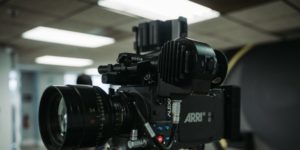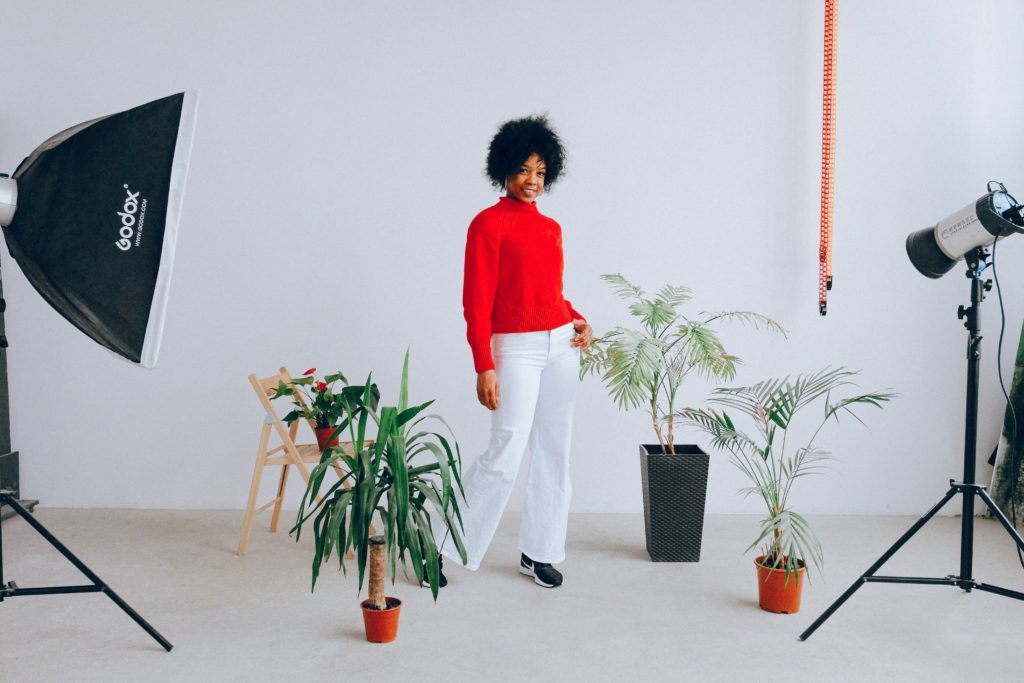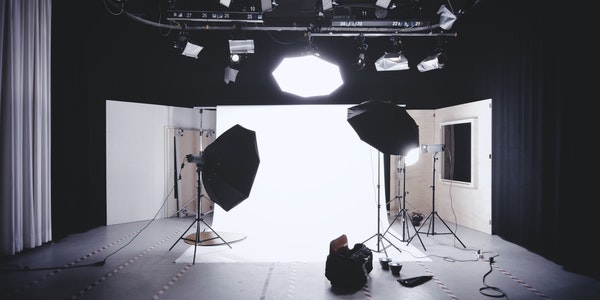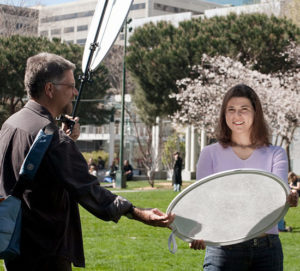Film and television lighting can be divided into two categories, flash and continuous lighting. Continuous lighting has advantages, but there are also disadvantages. In film and television lighting, continuous lighting cannot be relied solely on.
Advantages of continuous lighting:
★It is cheap and a good starting point for anyone with a limited budget.
★You can directly see where the highlights, shadows and the main light are.
![]()
The main shortcomings of continuous lighting:
★It generates too much heat and makes the on-site staff feel very anxious!
★The light it produces is very different from daylight, and it can’t restore the true color of the subject.
What effect will this have in actual photography? We know that continuous light will generate a lot of heat, which will make you and your subject become very hot and troublesome. Because of the bright light brought by continuous lighting, it also closes the iris in the subject’s eyes, which is usually unacceptable. Because you can’t get a better portrait effect.
Artificial light is a commonly used supplementary light source for taking photos, but the color of the final photo is yellow! Because the human eye sees that the light emitted by the tungsten bulb is white on the surface, but this is not the case. Color temperature is a key indicator for determining the color of the light. In Kelvin, the color temperature of daylight is about 5,600K, while the color temperature of tungsten bulbs is closer to 3200K, which is warm white, so it appears yellow on the photo.
There are 3 ways to solve this problem: First, you can put a filter on the lens so that you can use any daylight film. Secondly, use a light filter to balance the color film.
These two solutions can temporarily solve the problem of yellowing photos, but their biggest problem is that as the tungsten filament in the bulb burns, it will leave a small amount of residue inside the glass casing. As the bulb ages, the color of the light gradually turns yellow. When you are using negative film or digital shooting, you can correct any color cast when printing, but slides cannot do this.
Black-and-white shooting is the third simple and effective method to solve the yellowing of photos.
We are very impressed.
Use ordinary onboard flash, except that if you install it on the camera, you can’t know the lighting effect, which is simply too bad!
The advantages of studio flash are adjustable power, beautiful appearance, high light consistency and flexible and diverse control methods.
Let’s take a look at these at once.
Table of Contents
power
Commonly used flash units can release a huge amount of light in less than a second (usually about 1/2500 second!). For the average user, a flash with a power of 250, 300, 500, or 600 watts per second can usually meet most of the shooting needs. Joule is a measure of the power of a flash unit. Don’t be confused with the data in the user manual, this can be changed by changing the previous attachment! The power of 300 w/s is half of the power of 600 w/s, which is 1 f-stop. Therefore, if the 600w/s device is set to two meters away from the subject and the flashmeter reading you get is f/16, the 300w/s device in the same position will lower the aperture of f/11 .
Beautiful appearance
The flash unit of the studio is equipped with a continuous light, which is in a very obvious position in the general studio. Due to its positional flexibility, it can very accurately indicate the angle and quality of the flash when it fires, making your lighting easy to set up, because “what you see is what you want.”
Due to the relatively low power of this light, you will not encounter the heat or brightness issues involved in continuous lighting. The thing to remember is that the flash has stronger lighting, the shadows will be darker, and the highlights will be brighter. To avoid being blinded by what your eyes see when setting up the lighting, please shut down one eye (a camera has only one eye), and then tilt your eyelashes. This can increase the contrast you can see and is more like the contrast recorded by a camera. Remember to tell the model being photographed what you are doing, otherwise they may think you are weird!
consistency
As we said before, the tungsten bulb becomes more and more yellow when it burns. Every time the shutter is pressed, the flash will fire. The color of the light emitted by the flash tube will be balanced with the sunlight, which means that even if you use a slide film, you will You can use any film you like without filters.
control
The photography light has powerful functions, which is very good, but if you can’t control it, it is too wasteful! There are many types of photography lights. Even the simplest and cheapest studio flashes have at least a “full/half power” switch, and most will provide more control buttons. As we said before, if the power of the flash is reduced to half, the light output will be reduced by exactly 1 f level. By moving the magnetic head farther or closer to obtain more power, a simple magnetic head can be used to achieve a smaller power consumption reduction. The inverse square law basically means that if you move the light source twice as far away, you will lose two f-stops. For example, the camera lens is one meter away from the subject, ISO300 film is used, and the exposure is f/16. If we move the lens to two meters away, our exposure will be f/8, which is a reduction of two f-stops.
